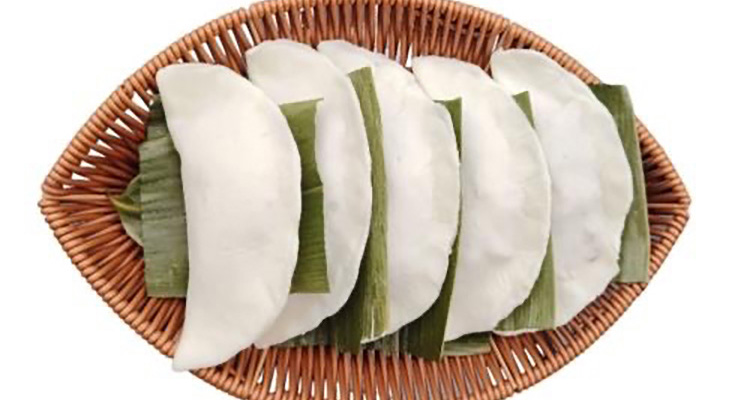Jingdezhen Glutinous Rice Dumplings – A Signature Jiangxi Snack You Must Try
When the bamboo steamer lid is lifted, the fragrant steam reveals translucent dumplings glistening like fine porcelain — this is Jingdezhen Glutinous Rice Dumplings, a delicate treat that reflects the craftsmanship of the porcelain capital. Pick one up gently with chopsticks to feel the tender yet elastic rice skin. As you bite in, the savory filling mingles with the soft, chewy texture, as if you were tasting an edible work of porcelain art.
1. Origin and History
These rice dumplings originated in Jingdezhen, with a history of several hundred years. According to local lore, porcelain artisans created them as a quick meal during busy work intervals. Over time, they evolved into a signature local snack, blending the shape of northern dumplings with the rice-based culinary traditions of the south — a perfect fusion of two regional food cultures.
2. Cultural Significance
In Jingdezhen, this dish is a common homemade delicacy enjoyed in every household. During festivals, the fragrance of steamed dumplings fills the streets, symbolizing unity and celebration. The dish represents not only the continuation of Jingdezhen’s thousand-year porcelain heritage but also the enduring artisan spirit in its culinary culture.

3. Ingredients and Characteristics
High-quality local late-harvest rice is ground into smooth rice batter to form thin yet elastic skins. The fillings come in both savory and sweet varieties: the savory version uses fresh pork, shiitake mushrooms, and tofu, while the sweet one features sesame seeds and sugar. What makes it special is the use of Jingdezhen’s unique sesame oil, which defines its distinctive aroma and flavor.
4. Preparation Process
First, the rice batter is steamed into thin sheets and then cooled before being cut into circles. The fillings are wrapped inside and crimped into beautiful edges. The dumplings are then steamed for about eight minutes until they retain their half-moon shape — the skin must stay intact, and the filling must not leak, which is the true test of craftsmanship.

5. Flavor and Texture
The rice skin is soft yet pleasantly chewy, and the filling is juicy and flavorful. The savory version offers a rich, umami blend of meat and mushrooms, while the sweet one balances the nutty depth of sesame with the light sweetness of sugar. Each bite offers a satisfying harmony of textures and tastes.
6. How to Eat
The most authentic way to enjoy them is to eat them hot, dipped in spicy chili sauce. Locals often pair the dumplings with a bowl of seaweed soup, whose mild flavor perfectly balances the richness of the dumplings. It’s customary in Jingdezhen to take a bite of dumpling followed by a sip of soup — a simple pleasure full of warmth.

7. Where to Try
You can find the most authentic versions at Old Street Snack Shop (average ¥15–25 per person) or Ceramic Workshop Eatery (average ¥12–20 per person). Always choose a place that steams to order — and if you want to try both versions, ask for a “mixed basket” to enjoy the sweet and savory flavors together.
8. Tips for Travelers
In English, it’s best known as Jingdezhen Glutinous Rice Dumplings. Be careful when eating, as the filling can be hot inside. Families with children may prefer the sweet version. The ideal time to enjoy them is within five minutes after steaming for the best texture and aroma.

9. Easy Home Recipe
At home, you can substitute wonton wrappers for the rice skins and adjust the filling to your taste. Although it won’t fully capture the local rice fragrance of Jingdezhen, with careful steaming, you can still recreate much of its authentic charm.
When you visit Jingdezhen, let a basket of these delicate dumplings introduce you to the city’s edible artistry. As the soft rice skin melts in your mouth and the flavorful filling bursts on your tongue, you’ll understand why this seemingly simple snack has become a lasting symbol of pride in China’s porcelain capital — a delicious expression of Jiangxi’s northern charm.


